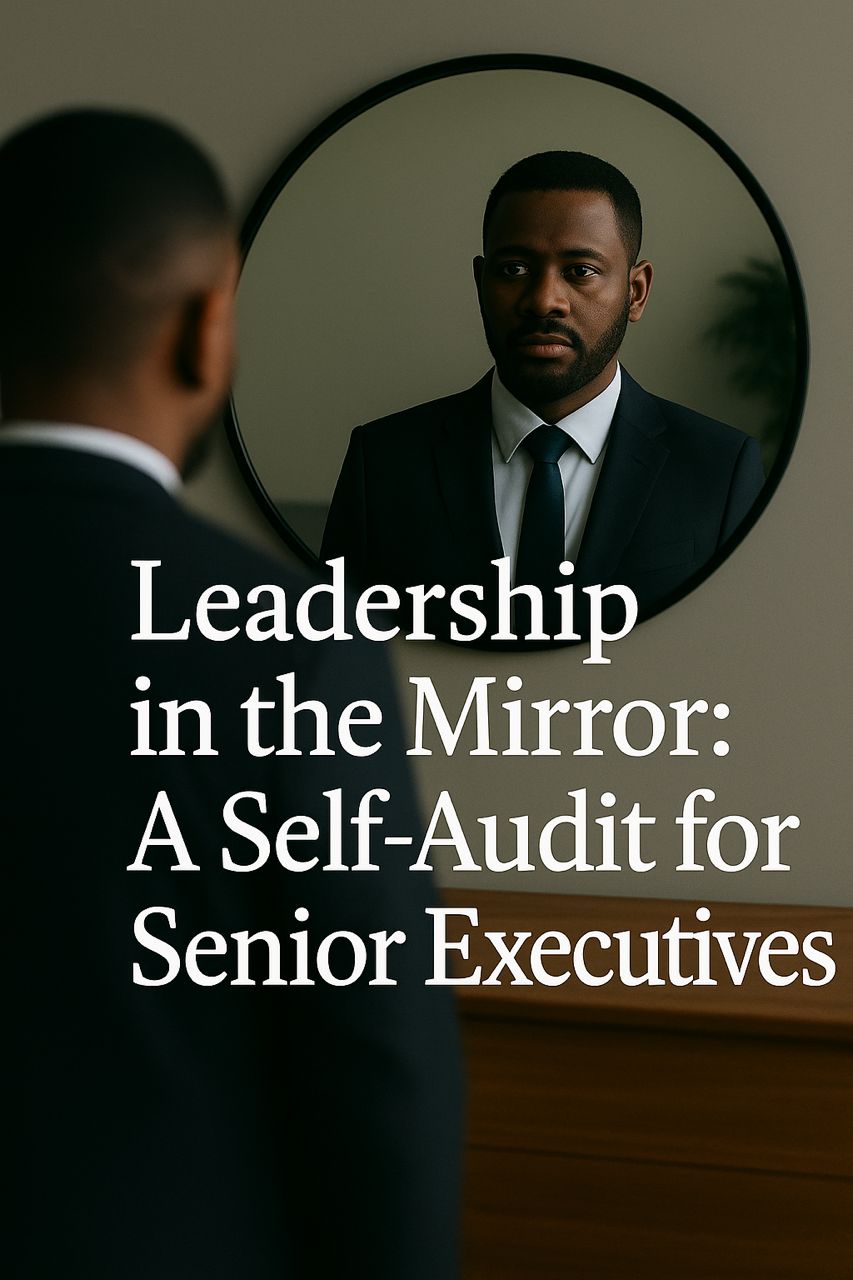
In the C-suite, conversations typically orbit around market share, innovation, profitability, and competitive advantage. These are all vital. Yet, behind those metrics lies a more personal and ultimately defining question:
Would you thrive under your own leadership?
It’s a confronting prompt, not of guilt, but of growth. It offers seasoned leaders an opportunity to reflect on how their leadership lands. Does your presence inspire loyalty, performance, and psychological safety? Or are people simply enduring you until a better option comes along?
Peter Drucker once said, “In every organization, friction, confusion, and underperformance occur naturally. Everything else requires leadership.” But that leadership must begin with a rigorous look in the mirror.
Below is a five-principle self-audit to help senior leaders refine their impact, grounded in research, lived experience, and transformative leadership practices.
1. Seek Feedback, And Show You Can Handle It
Feedback is not a courtesy. It’s a necessity. But at senior levels, honest feedback becomes rare, filtered by hierarchy or fear.
Why it matters:
Leaders who actively seek feedback are rated significantly more effective. Yet a Korn Ferry study shows nearly 70% of executives avoid giving candid feedback to peers, implying that many also resist receiving it.
What to do:
- Don’t wait for annual reviews—build real-time, frequent feedback channels.
- Blend anonymous surveys with open conversations.
- Respond to uncomfortable feedback with reflection, not retaliation.
- Visibly implement suggestions to show people that their voice matters.
Executive challenge: Ask three direct reports, “What’s one thing I should start, stop, and continue doing as your leader?”
Then pause, listen, and thank them, without defending yourself.
2. Make Reflection a Ritual
Many executives move fast, but few take time to think slowly. Yet strategic clarity and emotional resilience are born from reflection.
Why it matters:
A Harvard Business School study found that professionals who took 15 minutes daily to reflect performed 23% better than those who did not. If that holds true for mid-level staff, it’s even more critical at the top.
How to make it work:
- Block 30 minutes weekly for “Executive Debrief” time.
- Journal using prompts: What went well? What did not? Why?
- Use voice memos if writing feels unnatural.
- Build a personal board – mentors who challenge your blind spots.
Executive challenge:
If you’re too busy to reflect, you’re too busy to lead. Make time. Protect it.
3. Keep Learning, Especially Outside Your Comfort Zone
Leadership is not a destination, it’s a discipline. Yet, too many senior leaders assume their learning curve flattens at the top.
Why it matters:
McKinsey reports that 70% of executive roles now require continual digital and strategic learning. The future does not reward static expertise, it demands adaptive intelligence.
Upgrade your learning strategy by:
- Embracing vertical development, expanding how you think, not just what you know.
- Learning from unlikely sectors: the military, performing arts, and psychology.
- Reverse-mentor with Gen Z team members, they’re your culture litmus test.
Executive challenge:
Every quarter, invest in a learning experience outside your domain. It should stretch your thinking.
4. Lead with Empathy, Not Sentimentality
Empathy is not a “soft” skill, it’s a force multiplier for innovation, loyalty, and resilience.
Why it matters:
According to Catalyst, 61% of employees with empathetic leaders feel innovative. Compare that to just 13% under less empathetic leadership.
Put empathy into action:
- Ask before you assume. “What else is going on?” can open new insight.
- Be fully present in hard conversations.
- Read between the lines, tone, fatigue, silence all carry data.
But remember, empathy without accountability becomes indulgence. Leaders must care personally and challenge directly.
Executive challenge:
In your next tough conversation, start with:
“Help me understand how this happened.”
Let curiosity precede correction.
5. Live Your Values Under Pressure
Your values are not revealed in mission statements. They are revealed in meetings, in crises, and in decisions made behind closed doors.
Why it matters:
PwC’s Global Culture Survey reports that 79% of employees who see their leaders model the company’s stated values are highly engaged. Misalignment, on the other hand, breeds distrust.
Where values misalignment often shows up:
- Claiming innovation, but punishing calculated risk.
- Preaching inclusion, but rewarding sameness.
- Promoting transparency, but withholding key information.
Executive challenge:
Write down your top 5 personal leadership values.
Then ask a trusted team member to write down what they believe your values are, based only on your behavior.
Compare the two. What’s missing?
Final Reflection: What Would the Culture Say?
Culture is the residue of leadership. If you were absent for six months, what would remain?
- Would the team self-correct or stagnate?
- Would people emulate your standards or unlearn them?
- Would the best people want to come back and work for you?
As Simon Sinek put it, “A boss has the title. A leader has the people.”
So, would you work for you?
More importantly, would you stay? Would you grow? Would you thrive?
Legacy is not measured in profit alone.
It’s measured in people, principles, and the culture you leave behind.
References
- https://hbr.org/2023/03/how-leaders-can-get-the-feedback-they-need-to-grow
- https://www.harvardbusiness.org/the-modern-leaders-greatest-balancing-act/
- https://www.library.hbs.edu/working-knowledge/building-an-inclusive-workplace-prepare-to-shield-it-from-economic-fears
- https://www.mckinsey.com/industries/public-sector/our-insights/the-upskilling-imperative-required-at-scale-for-the-future-of-work
- https://www.catalyst.org/insights/2021/empathy-work-strategy-crisis
- https://www.pwc.com/gx/en/issues/crisis-solutions/global-crisis-survey.html

